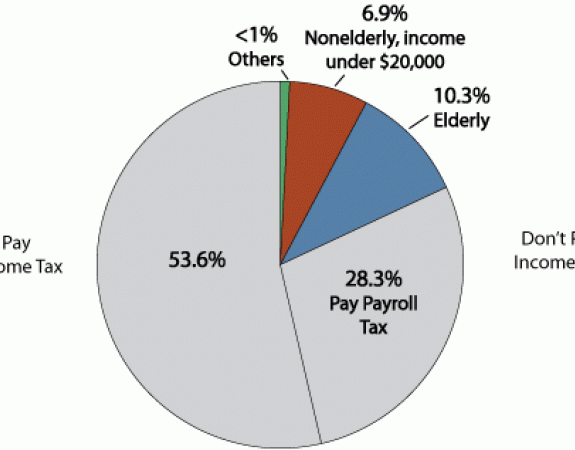Contents:


Such loss contingencies never get recorded in the financial statements. In simple words, Contingent Liability is defined as future obligations or liabilities that may or may not arise due to uncertain events or situations. These liabilities are also recorded in the accounting books if the amount of the liability can be estimated. Essentially, the effect that contingent liabilities have on an audit depends on their likelihood of occurring in the first place. As well, the impact on financial statements depends on the likelihood of the contingency occurring and the total amount of the transaction. Contingent liabilities can pose a threat to the reduction of net profitability and company assets.
As a result, we can conclude that future occurrences will determine whether or not it is a liability. Because of the uncertainty, these are referred to as contingent liabilities. A factor is deemed material if it has the potential to affect how users of a company’s financial statements make financial decisions. The words “material” and “significant” are practically interchangeable in this context.


You must disclose all contingencies that could significantly alter the company’s estimated earnings. Explain any obscure or potentially misleading items in the footnotes. You should also use the footnotes to discuss any contingent liabilities incurred between the initial creation of the financial statements and publication of the final version. Information collected and analyzed for contingent assets is obtained through the same process described above. Similarly to contingent liabilities, there is no Umoja accounting entry for contingent assets – instead, they are disclosed in the notes to the financial statements. On the other hand, if a loss becomes probable and can be reasonably estimated, your company would report a contingent liability on the balance sheet and a loss on the income statement.
Some examples of provisions
Indeed, if completely disregarded, a contingent liability could mature into an actual liability and result in an Antideficiency Act violation. Agencies have a legal obligation to take reasonable steps to avoid situations in which contingent liabilities become actual liabilities that result in Antideficiency Act violations. This may include the “administrative reservation” or “commitment” of funds, as well as taking other actions to prevent contingencies from materializing. IAS 37 Provisions, Contingent Liabilities and Contingent Assets outlines the accounting for provisions , together with contingent assets and contingent liabilities . Provisions are measured at the best estimate of the expenditure required to settle the present obligation, and reflects the present value of expenditures required to settle the obligation where the time value of money is material. The accounting rules for the treatment of a contingent liability are quite liberal – there is no need to record a liability unless the risk of loss is quite high.
The multiemployer guidance differs significantly from the “single employer” bookkeeping services guidance in ASC 715. Under multiemployer accounting, the carve-out business would only recognize a liability to the extent that the required contribution had not been paid at the end of the period. The assets of the plan would not be recorded in the carve-out financial statements. As a result, at the time of sale, a business must record the anticipated costs for replacement or repair during the warranty period.
What are the 3 types of contingent liabilities?
Based on the information received for 31 December 20X1, the claim still meets these recognition criteria, and thus a provision for this claim should be maintained. All provision accruals are automatically reversed at the start of each reporting period. The entry described above is therefore not required if the provision has already been reversed at the start of the year. A provision is reversed, either partially or in full, when it is no longer required. This differs from adjustments to provisions described in section 3.1.4 below, as reversals involve derecognition of all or part of a provision (i.e. they no longer meet the provisions recognition criteria).
The same approach applies when the loss is probable, but it remains impossible to estimate the magnitude with any degree of certainty. A contingent liability is not recognised in the statement of financial position. However, unless the possibility of an outflow of economic resources is remote, a contingent liability is disclosed in the notes.
Determining the appropriate classification for a contingent loss requires judgment. It’s important to consider all scenarios and document your analysis of the classification. These types of contingencies usually include pending litigation and guarantees of indebtedness that exist when a company guarantees the collectability of a receivable that it has discounted at the bank. The matching convention requires the recording of the expense in the period of the sale, not when the repair is made. As an organization and as individuals, we’re committed to our clients and community.
If the probability of the contingent obligation occurring is distant, it is not recorded or disclosed in this case. The term ‘remote’ refers to eventualities that aren’t likely to happen and aren’t even remotely possible. There is uncertainty about the payment’s timing and scope, as well as the chance that payment will not be made at all.
If the parent entity is expected to settle the obligation (i.e., is the primary obligor), management would likely conclude that the related liability is not attributed to the carve-out financial statements. Probable.If a contingent loss isprobable, it’s likely to occur and the company must record an accrual on the balance sheet and a loss on the income statement if the amount can be reasonably estimated. Otherwise, the company should disclose the nature of the contingency and explain why the amount can’t be estimated.
Measurement
Although contingent liabilities are necessarily estimates, they only exist where it is probable that some amount of payment will be made. This is why they need to be reported via accounting procedures, and why they are regarded as “real” liabilities. The disclosure of contingent liability allows the company to be better prepared for future obligations. Some common instances of contingent liabilities include the outcome of a long-pending lawsuit, a government inquiry into an organization’s business, and the possibility of expropriation.
As there is currently no module within Umoja to facilitate the provisions reporting process, MS Excel spreadsheets and Word documents should be used to record the necessary information. Reasonably possible.If a contingent loss isreasonably possible, it falls somewhere between remote and probable. Here, the company must disclose it but doesn’t need to record an accrual.
- A possible contingency occurs when a liability may or may not occur, but the likelihood of its occurrence is less than 50% of that of a probable contingency.
- For example, an adjustment may be required when the estimated cost to settle a legal case changes from USD 10 million at the end of one reporting period to USD 12 million at the end of the next reporting period.
- Use Year-End Report No. 22, Statement of Contingent Liabilities to report these liabilities.
An adjusting journal entry is typically made just prior to issuing a company’s financial statements. Ultimately, management decides how to classify contingent liabilities. But external auditors will assess the company’s existing classifications and accruals to determine whether they seem appropriate. They’ll also look out for new contingencies that aren’t yet recorded. During fieldwork, your auditors may ask for supporting documentation and recommend adjustments to estimates and disclosures, if necessary, based on current market conditions. A contingent liability is a potential obligation that depends on the occurrence or non-occurrence of one or more events in the future.
How to Calculate Amortization on a Warranty
10 Best Bank for Savings Account in India Savings account is a type of financial instrument offered by several banks. 10 Best Corporate Bond Funds in India to Invest in April Corporate bond funds are debt funds that invest at least 80% of the investment corpus in companies … 10 Best Demat Accounts in India for Beginners in Creation of Demat accounts revolutionised the way trades were conducted at the stock exchanges. Top 10 Chit Fund Schemes in India in Chit funds are one of the most popular return-generating saving schemes in India. Mahila Samman Savings Certificate Scheme -Interest Rate, Benefits and Eligibility The Mahila Samman Savings Certificates, a fixed-income investment programme explicitly launched for…


This will allow the Accounts Division to group provisions by their nature, and understand the value of individual items in the context of overall audit materiality. The next step would be to estimate the potential outflow based on the criteria described in section 2.1.2 above. Recognized when the recognition criteria in section 2.1.1above are met. Adjusting events after the reporting date are those that provide additional evidence of conditions that existed at the reporting date. There is a possible obligation or a present obligation that may, but probably will not, require an outflow of resources. There is a present obligation that probably requires an outflow of resources.
What are some examples of contingent liabilities?
The disclosure should include an estimate of the amount of the contingent loss or an explanation of why it can’t be estimated. Contingent liabilities also include obligations that are not recognised because their amount cannot be measured reliably or because settlement is not probable. A loss contingency exists when the company thinks there is a chance they might have a cash outflow for an event in the future, but currently, there is no definite answer. For loss contingencies, it depends on the assessment or likelihood of incurring the loss. It’s difficult to estimate or even quantify the impact that contingent liabilities could have because of their uncertain nature.
Mondelēz International Reports Q3 2022 Results – Mondelez International
Mondelēz International Reports Q3 2022 Results.
Posted: Tue, 01 Nov 2022 07:00:00 GMT [source]
Is an individual or group of people that collaborate to achieve certain commercial goals. Some business organizations are formed to earn income for owners. Other business organizations, called nonprofits, are formed for public purposes. The Accounts Division should maintain an excel sheet containing the key details regarding each significant non-adjusting event requiring disclosure.
Classification of Contingent Liability
A loss contingency that is probable or possible but the amount cannot be estimated means the amount cannot be recorded in the company’s accounts or reported as liability on the balance sheet. Instead, the contingent liability will be disclosed in the notes to the financial statements. A contingent liability is a potential obligation that may arise from an event that has not yet occurred.
But a contingent liability needs to be large enough to be able to truly affect a company’s share price. Do not confuse these “firm specific” contingent liabilities with general business risks. General business risks include the risk of war, storms, and the like that are presumed to be an unfortunate part of life for which no specific accounting can be made in advance. Legal disputes give rise to contingent liabilities, environmental contamination events give rise to contingent liabilities, product warranties give rise to contingent liabilities, and so forth. A contingent asset is a potential economic benefit that is dependent on future events out of a company’s control.
Mondelēz International Reports Q4 and FY 2022 Results – Mondelez International
Mondelēz International Reports Q4 and FY 2022 Results.
Posted: Tue, 31 Jan 2023 08:00:00 GMT [source]
Types of Fixed Deposit in 2023 – Know Different Types of FDs and How to Choose Fixed deposits are a popular investment option offered by banks and other financial instituti… This issuing company may then retire the stock or sell it at a later date. Companies buy back shares in order to prop up their stock price by creating artificial demand. A stock buy back is also useful for transferring money to shareholders without using a dividend.
The accounting rules ensure that financial statement readers receive sufficient information. The Financial Accounting Standards Board strictly defines contingent liabilities that may be recognized under GAAP. You must first determine the odds of each contingency occurring. Classify the contingencies based on whether they are probable, reasonably possible or remote. Disregard remote contingencies when preparing the financial statements. Re-evaluate the item if circumstances change and the contingency becomes more likely.
